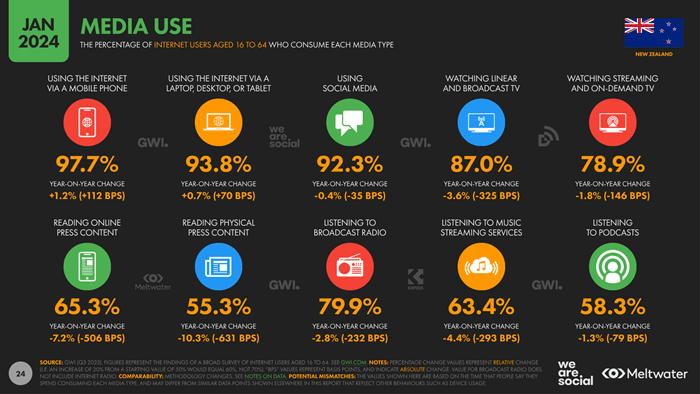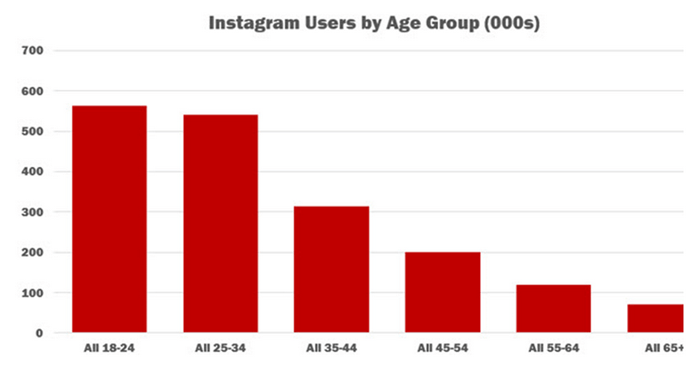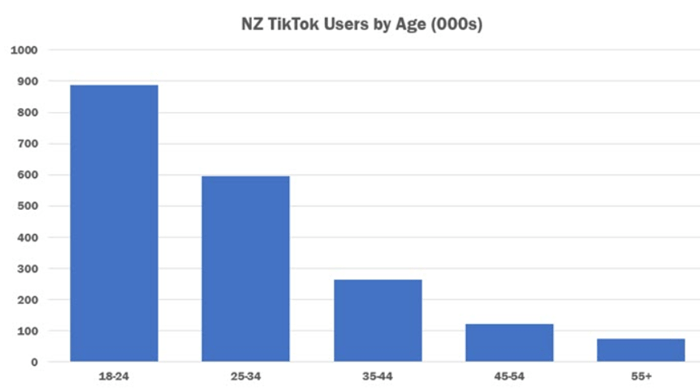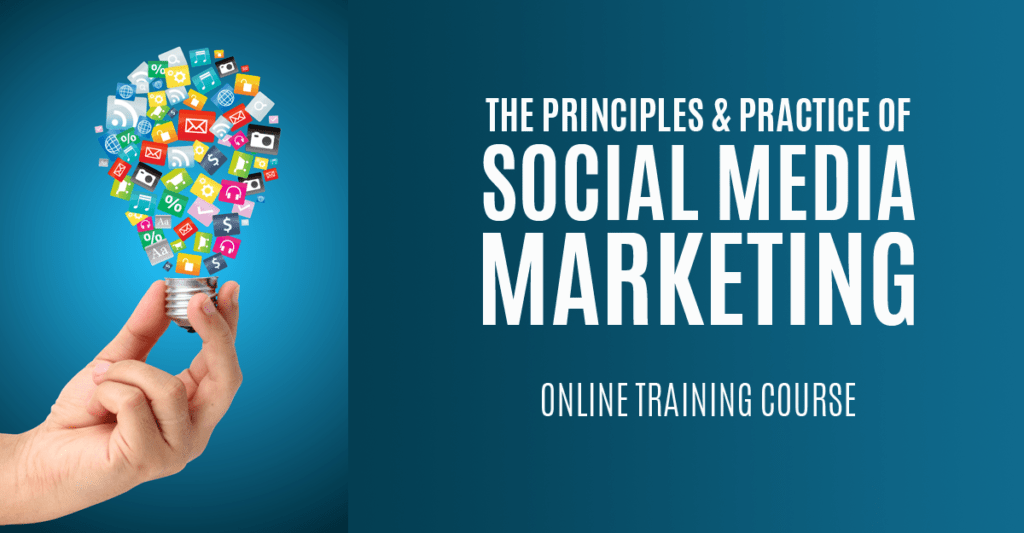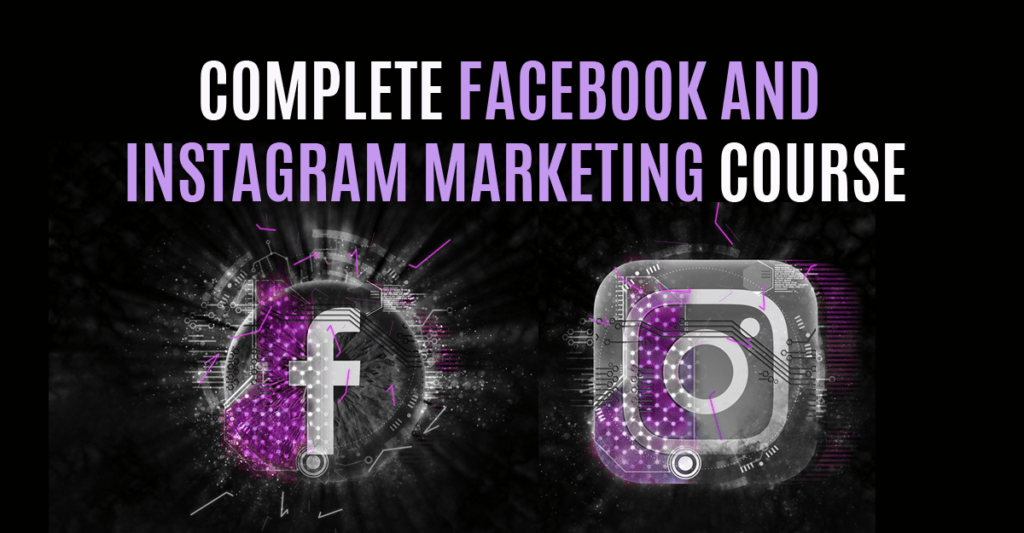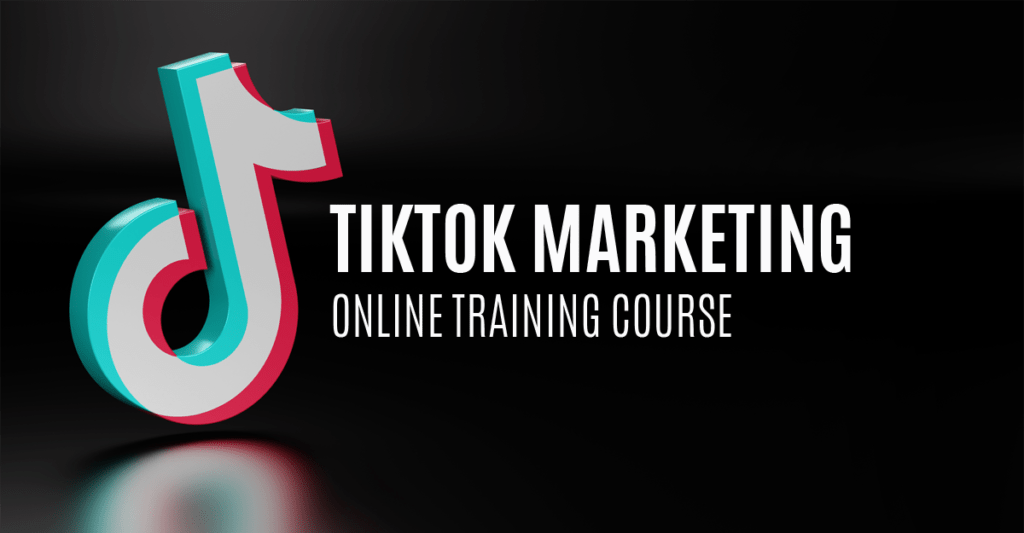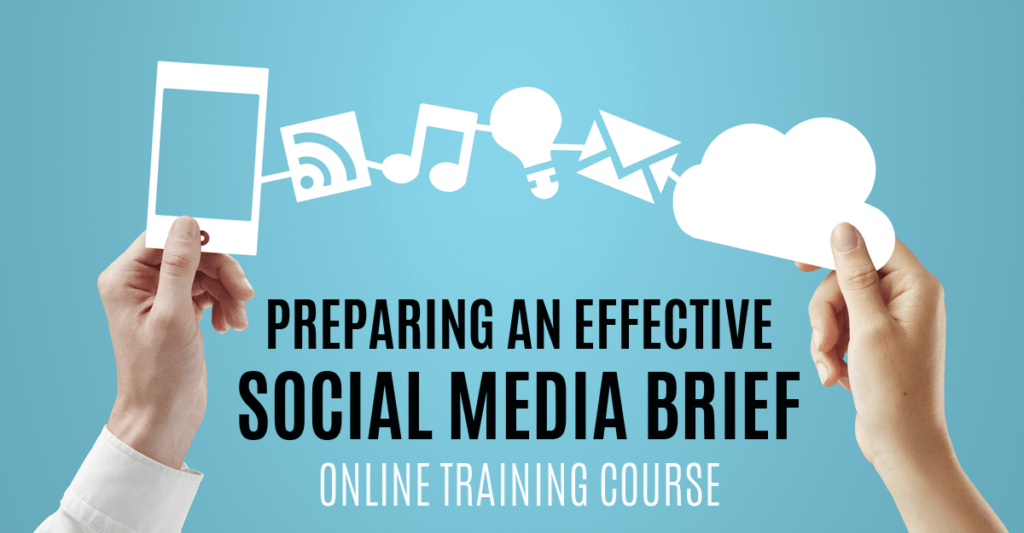In today’s digital landscape, social media is an essential tool for small businesses aiming to enhance their online presence and reach a wider audience.
According to the most recent data, 92.3% of Kiwi Internet users (aged 16-64) use social media, well ahead of any other measured medium.
There’s a caveat, though: with numerous social media platforms available, it can be challenging to determine which ones are worth the investment of time and resources. Where should you devote your energies to promote your business?
That’s why we’re here.
How to Choose the Right Social Media Platforms for Your Small Business
This comprehensive guide will help New Zealand small- and medium-sized businesses strategically choose the ideal social media platforms.
Identify Your Audience
Understanding your audience is crucial when selecting social media platforms. This involves creating a detailed profile of your own customers and prospects, considering factors such as age, gender, income, education, and interests. Different platforms attract different demographics. For instance, Instagram and TikTok are popular among younger users, while Facebook has a more mature audience.
Here are some recent numbers to guide you:
Facebook appeals across the demographic spectrum — but, we should note, younger audiences spend more of their time elsewhere (especially those aged under 25).
Instagram is much more focused on those Under 35.
TikTok
And TikTok appeals to even younger consumers (including those 18).
To gather accurate data on your audience’s demographics and online behavior, use analytics tools and conduct customer surveys. This information will guide you in choosing a social platform that effectively engages your audience.
Define Your Social Media Goals
Defining your goals is a foundational step in crafting an effective social media strategy for your small business. This process involves identifying clear, actionable objectives that align with your broader business aims. By setting specific goals, you can tailor your social media activities to achieve desired outcomes, whether that be increasing brand awareness, generating leads, engaging with your community, or driving traffic to your website.
Importance of Goal Setting
Setting goals provides direction and focus for your social media efforts. Without clear objectives, your social media presence may become scattered and ineffective. Goals help you measure success and determine the return on investment (ROI) of your social media activities. They also enable you to allocate resources more efficiently, ensuring that time and money are spent on strategies that move your business forward.
Types of Social Media Goals
1. Brand Awareness: Increasing brand visibility is a common goal for businesses new to social media or looking to expand their reach. Platforms like Instagram and TikTok, known for their large, engaged audiences and visual content, are particularly effective for building brand awareness. Creating visually appealing content that resonates with your target audience can help your brand stand out in a crowded digital landscape.
2. Lead Generation: If your primary goal is to generate leads, platforms like LinkedIn are ideal, especially for B2B businesses. LinkedIn’s professional network allows you to connect with potential clients and partners, share industry insights, and establish your business as a thought leader. Utilizing features like LinkedIn Ads and Sponsored Content can further enhance your lead generation efforts.
3. Community Engagement: Engaging with your community fosters loyalty and builds a strong brand reputation. Platforms like Facebook and X (Twitter) are effective for real-time interaction and community building. These platforms allow you to engage directly with your audience through comments, messages, and live events, creating a sense of connection and community around your brand.
4. Website Traffic: Driving traffic to your website is crucial for converting social media interactions into tangible business outcomes. Platforms like Pinterest and YouTube can be particularly effective for this goal. Pinterest’s visual search capabilities and YouTube’s video content can direct users to your website for more information, product purchases, or service inquiries.
Aligning Goals with Content Strategy
Once your goals are defined, align your content strategy to support these objectives. For example:
- If brand awareness is your goal, focus on creating shareable content that highlights your brand’s unique value proposition.
- If lead generation is your aim, develop content that captures leads, such as gated resources or webinars.
- For community engagement, prioritize interactive content like polls, Q&A sessions, and user-generated content campaigns.
Measuring Success
To ensure your goals are being met, establish key performance indicators (KPIs) that align with each objective.
- For brand awareness, track metrics like reach and impressions.
- For lead generation, monitor the number of leads captured and conversion rates.
- Engagement metrics such as likes, shares, and comments can indicate community involvement.
- Website traffic can be measured through referral traffic and click-through rates.
By defining clear social media goals and aligning them with your business objectives, you can create a focused and effective social media strategy that drives meaningful results for your small business. Regularly review and adjust your goals based on performance data and changing business needs to ensure continued success in the dynamic digital landscape.
Find Where Your Audience Is
Understanding where your audience spends their time online is a crucial step in developing an effective social media strategy. By identifying the platforms where your target audience is most active, you can ensure that your marketing efforts are reaching the right people, thereby maximizing engagement and return on investment.
Understanding Audience Demographics
The first step in finding your audience is to understand their demographics. This involves gathering data on age, gender, location, interests, and online behaviors. As we noted above, different social media platforms attract distinct demographics.
To gather information about your audience, utilize analytics tools and conduct customer surveys. Tools like Google Analytics, Facebook Insights and Instagram Analytics can provide valuable data on who is engaging with your content. Additionally, platforms like Sprout Social and Pew Research Center offer insights into where different demographics spend their time online, helping you make informed decisions about where to focus your efforts.
Platform-Specific Engagement
Once you have a clear understanding of your audience’s demographics, analyze the engagement levels on various platforms. Engagement metrics such as likes, shares, comments, and click-through rates can indicate where your audience is most active. For instance, if your audience engages more with visual content, platforms like Instagram and Pinterest, which prioritize images and short videos, may be more effective.
Facebook remains a versatile platform suitable for diverse content types and engaging with a broad audience. It is particularly effective for building community and facilitating discussions. Instagram, with its emphasis on visual content, appeals to younger demographics and offers tools like Stories and Reels to enhance engagement. LinkedIn is ideal for professional networking and sharing industry insights, making it a valuable platform for businesses targeting professionals.
Aligning Platform Choice with Audience Preferences
Aligning your platform choice with your audience’s preferences is essential for effective social media marketing. By choosing platforms that resonate with your target audience, you can ensure that your content reaches the right people at the right time. This alignment not only enhances engagement but also increases the likelihood of achieving your marketing goals, whether that be brand awareness, lead generation, or community building.
For example, if your target audience consists of young adults interested in fashion and lifestyle, Instagram and TikTok may be the best platforms to showcase your products through visually appealing content. Conversely, if your business targets professionals in the tech industry, LinkedIn would be a more appropriate platform for sharing thought leadership content and industry news.
Continuous Monitoring and Adaptation
The digital landscape is dynamic, with social media trends and user behaviors constantly evolving. Therefore, it is important to continuously monitor where your audience is active and adapt your strategy accordingly. Regularly review your analytics to track changes in engagement and audience demographics. Stay informed about new features and trends on social media platforms, and be ready to adjust your strategy to incorporate these changes.
By finding where your audience is and aligning your social media strategy with their preferences, you can optimize your marketing efforts and achieve meaningful results. This approach not only enhances engagement but also builds a loyal community around your brand, ultimately driving business growth.
Understand The Characteristics of Each Social Media Platform
Understanding the dynamics of each social media platform is essential for leveraging their unique characteristics to achieve your business goals. Each platform offers distinct features, user demographics, and content formats that can significantly impact how your brand is perceived and engaged with by your audience.
Facebook is one of the most versatile social media platforms, suitable for a wide range of content types, from text and images to videos and live streams. It appeals to a broad demographic, making it ideal for engaging with a diverse audience. Facebook is particularly effective for community building and fostering discussions through groups and pages. Its advertising platform is robust, offering detailed targeting options based on user interests, behaviors, and demographics, which can be highly effective for reaching specific audience segments.
Instagram is a visually-driven platform that is particularly popular among younger demographics, especially those under 35. It is ideal for brands that can leverage high-quality images and short videos to capture attention. Features like Instagram Stories and Reels enhance engagement by allowing brands to share ephemeral content that encourages frequent interaction. Instagram’s shopping features also provide a seamless way for businesses to showcase products and drive sales directly through the app.
LinkedIn is the go-to platform for B2B marketing, networking, and sharing industry insights. It is particularly effective for reaching professionals aged 30-49. LinkedIn allows businesses to establish themselves as thought leaders by sharing content related to industry news, professional development, and company updates. The platform’s advertising capabilities, including Sponsored Content and InMail, enable precise targeting of professionals based on job title, industry, and company size, making it a crucial tool for businesses targeting a professional audience.
X (Twitter)
X is known for its real-time interaction and is ideal for engaging with trending conversations through hashtags. It is a powerful platform for customer service, allowing businesses to respond quickly to inquiries and feedback. X’s concise format encourages direct communication and is effective for sharing news, updates, and engaging in public discourse. The platform’s advertising options, such as Promoted Tweets and Trends, help increase visibility and engagement with a broader audience.
Pinterest is a visual discovery platform that predominantly attracts female users interested in topics like recipes, DIY projects, and retail. It is particularly effective for businesses in the fashion, home decor, and food industries. Pinterest allows users to save and organize content, making it a valuable tool for driving traffic to websites and increasing brand visibility. The platform’s advertising features, such as Promoted Pins, can enhance reach and engagement with targeted audiences.
YouTube
YouTube is the leading platform for long-form video content, tutorials, and educational material. It appeals to a broad age range and is ideal for businesses that can produce high-quality video content. YouTube’s search functionality and recommendation algorithms help increase content visibility, while its advertising options, such as TrueView ads, allow businesses to target specific audiences based on interests and viewing habits. YouTube is particularly effective for building brand authority and engaging with audiences through informative and entertaining content.
TikTok
TikTok is a rapidly growing platform known for its short-form video content and appeal to younger audiences. It is effective for building brand awareness through viral trends and challenges. TikTok’s algorithm promotes content based on user interactions, making it possible for businesses to reach large audiences organically. The platform’s advertising options, including In-Feed Ads and Branded Hashtag Challenges, provide opportunities for brands to engage creatively with users and increase visibility.
Understanding the dynamics of each social media platform allows businesses to tailor their strategies to leverage the unique features and user behaviors of each platform. By aligning content with platform characteristics and audience preferences, businesses can optimize their social media presence, enhance engagement, and achieve their marketing goals. Regularly assessing platform performance and staying updated with new features and trends is essential for maintaining a competitive edge in the ever-evolving digital landscape.
Assess Your Resources
Assessing your resources is a critical step in developing a successful social media strategy. This involves evaluating the skills, time, budget, and tools you have available to manage your social media presence effectively. Understanding these elements will help you allocate resources efficiently and determine whether you need to invest in additional support or tools to meet your social media goals.
Skills Required for Social Media Marketing
1. Content Creation: The ability to create engaging, high-quality content is essential. This includes skills in graphic design, photography, videography, and copywriting. Each platform has its own content style, so being versatile in creating various types of content is crucial. For instance, Instagram requires visually appealing images and short videos, while LinkedIn may require more professional and informative content.
2. Copywriting: Crafting compelling captions, posts, and calls to action requires strong writing skills. Effective copywriting can capture attention, convey your brand message, and encourage audience engagement. Understanding the tone and style appropriate for each platform is also important, as it influences how your message is perceived.
3. Data Analysis: Analyzing social media metrics is vital for understanding what content resonates with your audience and how your strategy is performing. Skills in using analytics tools like Google Analytics, Facebook Insights, and Hootsuite Analytics are important for tracking engagement, reach, and conversion rates. This data-driven approach allows for informed decision-making and strategy adjustments.
4. Community Management: Engaging with your audience and managing online communities requires strong communication skills. This involves responding to comments, messages, and reviews promptly and professionally. Building a positive online community can enhance brand loyalty and customer satisfaction.
5. Strategic Planning: Developing a comprehensive social media strategy involves setting clear goals, identifying target audiences, and planning content calendars. Strategic planning skills ensure that your social media efforts are aligned with your overall business objectives and that resources are used effectively.
6. Advertising: Understanding how to create and manage social media ad campaigns is essential for reaching a broader audience. Skills in using advertising platforms like Facebook Ads Manager and LinkedIn Campaign Manager are important for targeting specific demographics and optimizing ad performance.
7. SEO and Hashtag Strategy: Knowledge of search engine optimization (SEO) and effective hashtag use can increase the visibility of your content. Understanding how to use relevant keywords and hashtags helps your content reach a wider audience and improves discoverability on platforms like Instagram and Twitter.
Evaluating Team Capacity and Tools
Assess the capacity of your team to handle social media tasks. Determine who will be responsible for content creation, community management, and analytics. If your team lacks certain skills, consider training or hiring additional staff. Alternatively, outsourcing to social media agencies or freelancers can fill skill gaps and provide expertise.
Invest in tools that streamline social media management. Tools like Buffer, Hootsuite, and Sprout Social can help schedule posts, track analytics, and manage multiple accounts. These tools save time and provide valuable insights into your social media performance.
Budget Considerations
Determine the budget available for social media marketing. This includes costs for advertising, tools, and potential hires. Allocating a budget for paid promotions can enhance your reach and engagement, especially when starting out or launching new campaigns. Regularly reviewing your budget ensures that resources are being used efficiently and that your social media strategy remains cost-effective.
By thoroughly assessing your resources, you can develop a realistic and effective social media strategy that leverages your strengths and addresses any gaps. This approach ensures that your social media efforts are sustainable and aligned with your business goals, ultimately driving growth and success.
Analyze Competitors
Conducting a thorough competitor analysis is a strategic approach that allows businesses to gain insights into the social media landscape within their industry. By understanding what competitors are doing well and where they might be lacking, businesses can refine their own strategies to capture market opportunities and improve their social media presence.
Steps to Analyze Competitors
1. Identify Key Competitors: Start by identifying who your main competitors are. These could be businesses offering similar products or services within your industry. Consider both direct competitors (those offering the same products) and indirect competitors (those offering different products that fulfill the same need).
2. Visit Competitors’ Social Media Pages: Once you have a list of competitors, visit their social media profiles across various platforms. Take note of which platforms they are active on, the frequency of their posts, and the type of content they share. This will give you an idea of where they focus their efforts and how they engage with their audience.
3. Analyze Content Strategy: Pay close attention to the content being shared by your competitors. Look at the types of posts that receive the most engagement, such as likes, comments, and shares. Determine if they use a particular tone or style and how they incorporate multimedia elements like images, videos, and infographics. This analysis can help you identify content trends and preferences within your industry.
4. Evaluate Engagement Levels: Engagement is a key indicator of how well content resonates with an audience. Assess the level of interaction on competitors’ posts. High engagement rates can indicate successful content strategies, while low engagement might suggest areas where competitors are struggling. Consider how competitors respond to comments and engage with their community, as this can impact brand perception and loyalty.
5. Examine Follower Growth and Demographics: Look at the size and growth of competitors’ follower bases. If you’re on a limited budget, just set up a spreadsheet and track your competitors monthly. Alternatively, tools like Social Blade can provide insights into follower trends over time. Additionally, try to understand the demographics of their audience. This information can help you identify potential gaps in your own audience reach.
6. Assess Use of Paid Advertising: Determine if competitors are using paid advertising on social media platforms. You can often spot sponsored posts in your feed or use tools like Facebook Ad Library to see active ads. Analyze the messaging, targeting, and calls to action used in these ads to understand their advertising strategy.
7. Utilize Competitor Analysis Tools: Leverage tools like Buzzsumo, Brandwatch Analytics, and SEMrush to gain deeper insights into competitors’ social media performance. These tools can provide data on content reach, engagement metrics, and trending topics, helping you understand what strategies are working in your industry.
What to Look For
Here are some of the competitive activities you should track:
- Content Themes and Topics: Identify recurring themes or topics in competitors’ content. This can reveal what resonates with the audience and highlight content areas you might want to explore.
- Types of posts: Are your competitors typically simply posting images or are they more likely to include videos and other more interactive elements?
- Posting Frequency and Timing: Analyze how often competitors post and at what times. This can help you optimize your own posting schedule to maximize visibility and engagement.
- Visual and Brand Identity: Observe the visual elements of competitors’ profiles, such as logos, color schemes, and overall branding. Consistent and appealing visuals can enhance brand recognition and appeal.
- Customer Feedback and Sentiment: Pay attention to customer comments and feedback on competitors’ posts. This can provide insights into customer satisfaction, common complaints, and areas for improvement.
By systematically analyzing competitors’ social media strategies, businesses can uncover valuable insights that inform their own approach. This analysis not only helps identify opportunities for differentiation but also guides strategic decisions to enhance engagement and achieve business objectives. Regularly revisiting competitor analysis ensures that your social media strategy remains competitive and responsive to industry trends.
Content Strategy Alignment
Developing a robust content strategy is essential for maximizing the impact of your social media efforts. The key to a successful strategy is understanding the specific types of content that work best on each platform and tailoring your approach to meet the expectations and preferences of your prospective audience.
Facebook is a versatile platform that supports a wide range of content types, including text, images, videos, and live streams. To engage effectively with your audience on Facebook, consider the following content strategies:
- Storytelling: Use posts to share compelling stories about your brand, products, or customer experiences. This can create an emotional connection with your audience.
- Video Content: Short, engaging videos tend to perform well on Facebook. Consider using
- Facebook Live for real-time interaction and to create a sense of community.
- Interactive Content: Polls, quizzes, and contests can drive engagement and encourage users to interact with your brand.
Instagram is a visually-driven platform that thrives on high-quality images and videos. It is particularly popular among younger demographics, making it ideal for brands targeting this audience. Effective content strategies for Instagram include:
- High-Quality Imagery: Invest in professional photography to showcase your products or services in the best light.
- Stories and Reels: Utilize Instagram Stories and Reels to share behind-the-scenes content, tutorials, or quick tips. These formats are perfect for engaging users with short attention spans.
- User-Generated Content: Encourage your audience to share their own photos and experiences with your products, which can build community and trust.
LinkedIn is the premier platform for B2B marketing and professional networking. It is best suited for content that demonstrates expertise and provides value to a professional audience. Consider these strategies:
- Thought Leadership: Publish articles or posts that showcase your industry knowledge and insights. This positions your brand as a leader in your field.
- Professional Development Content: Share tips, webinars, or e-books that help your audience improve their skills or advance their careers.
- Company Updates: Use LinkedIn to share news about your company, such as product launches, partnerships, or awards.
X (Twitter)
X is known for its real-time interaction and is effective for sharing news and engaging with trending topics. Content strategies for X include:
- Concise Updates: Share timely updates, news, or announcements in a concise format. Use relevant hashtags to increase visibility.
- Engagement with Trends: Participate in trending conversations to increase your brand’s visibility and relevance.
- Customer Service: Use Twitter as a platform for customer support, responding quickly to inquiries and feedback.
Pinterest is a visual discovery platform that excels in driving website traffic. It is especially effective for businesses in the fashion, home decor, and food industries. Content strategies for Pinterest include:
- Infographics and Guides: Create visually appealing infographics or step-by-step guides that provide value to users and encourage sharing.
- Product Pins: Use high-quality images to showcase your products, linking directly to your website for purchases.
- Seasonal Content: Align your content with seasonal trends and events to capture user interest.
YouTube
YouTube is the leading platform for long-form video content. It is ideal for brands that can produce high-quality videos that educate, entertain, or inspire. Consider these strategies:
- Tutorials and How-To Videos: Create informative videos that teach your audience how to use your products or services.
- Behind-the-Scenes Content: Share videos that provide a glimpse into your company culture or production process, building transparency and trust.
- Collaborations and Influencers: Partner with influencers or other brands to reach new audiences and add credibility to your content.
TikTok
TikTok is a rapidly growing platform known for its short-form video content. It is particularly popular among younger audiences and is effective for building brand awareness through creative and viral content. Strategies for TikTok include:
- Trendy Challenges: Participate in or create challenges that align with your brand, encouraging user participation and engagement.
- Creative Storytelling: Use TikTok’s unique editing features to tell engaging stories that resonate with your audience.
- Influencer Partnerships: Collaborate with TikTok influencers to reach a wider audience and leverage their creativity and following.
By understanding the specific content types that work best on each platform and tailoring your strategy accordingly, you can effectively engage your audience and achieve your social media goals. Regularly review and adapt your content strategy based on performance metrics and audience feedback to ensure continued success.
Stay Flexible and Adaptable
In the ever-evolving world of social media, staying flexible and adaptable is crucial for maintaining an effective marketing strategy. The landscape is dynamic, with new trends, technologies, and user behaviors emerging regularly. Businesses that remain agile can capitalize on these changes, ensuring their content remains relevant and engaging.
Importance of Staying Up to Date
Keeping up with social media trends is vital for several reasons:
1. Platform Changes: Social media platforms frequently update their algorithms, features, and user interfaces. These changes can impact how content is displayed and engaged with. For instance, an algorithm update might prioritize video content over static images, or a new feature like Instagram Reels could become a primary engagement driver. Staying informed about these updates allows businesses to adjust their strategies accordingly.
2. Emerging Trends: Trends on social media can shift rapidly. What was popular last month might not be relevant today. By staying current with trends, businesses can create content that resonates with what users are currently interested in, increasing the likelihood of engagement. For example, participating in viral challenges or using trending hashtags can boost visibility and reach.
3. Technological Advancements: New technologies, such as augmented reality (AR) filters or artificial intelligence (AI)-driven analytics, can offer innovative ways to engage with audiences. Adopting these technologies early can give businesses a competitive edge, allowing them to offer unique experiences that capture user interest.
4. User Behaviour: As user preferences and behaviours change, so too should your content strategy. For example, as more users consume content on mobile devices, ensuring that your content is mobile-friendly becomes increasingly important. Understanding shifts in user behavior helps tailor content to meet audience expectations.
What to Watch For
1. Algorithm Updates: Regularly monitor announcements from social media platforms about changes to their algorithms. These updates can affect content visibility and engagement, necessitating adjustments in posting strategies and content types.
2. New Features: Platforms often introduce new features designed to enhance user experience. Whether it’s Instagram’s Shopping feature or LinkedIn’s Stories, integrating these tools into your strategy can increase engagement and provide new ways to connect with your audience.
3. Competitor Activity: Keep an eye on what your competitors are doing. If they are adopting new strategies or platforms, it might indicate a shift in industry trends. Analyzing competitor activity can provide insights into successful tactics and potential areas for differentiation.
4. Audience Feedback: Engage with your audience to gather feedback on your content. This can provide valuable insights into what is working and what needs improvement. Use this feedback to refine your strategy and ensure it aligns with audience expectations.
5. Industry News: Stay informed about broader industry trends and news that could impact social media marketing. This includes changes in regulations, such as data privacy laws, which can affect how you collect and use audience data.
Adapting Your Strategy
To remain flexible, businesses should adopt a mindset of continuous learning and iteration. Regularly review your social media performance metrics to identify areas for improvement. Be willing to experiment with new content types, platforms, and technologies. Set aside time for your team to explore new ideas and test innovative approaches.
Additionally, consider investing in training and development for your team to keep their skills sharp and up-to-date with the latest social media tools and techniques. This investment ensures that your team can effectively navigate the changing landscape and implement strategies that drive success.
By staying flexible and adaptable, businesses can navigate the complexities of social media marketing, capitalize on new opportunities, and maintain a strong connection with their audience. This approach not only enhances engagement but also positions your brand as a leader in the digital space, capable of thriving in an ever-changing environment.
Conclusion
Choosing the right social media platforms for your small business requires a strategic evaluation of your business goals, audience demographics, and resource availability. By aligning these elements with the dynamics of each platform, you can optimize your social media strategy, ensuring maximum engagement and return on investment. The key to success in social media marketing lies in being selective, strategic, and adaptable. Regularly assess your strategy’s effectiveness and iterate based on data insights and changing business objectives for continued success in the digital marketing realm.
If you’d like to learn more about Social Media Marketing, check out our courses:
The Principles & Practice of Social Media Marketing
Elevate your social media game to new heights with our 13-part “Social Media Marketing Course,” specially tailored for New Zealand businesses relatively new to Social Media. This course offers a deep dive into the world of social media, equipping you with the strategies and tools necessary to create engaging content, foster a thriving community, and drive meaningful engagement across platforms. From the basics of platform selection and content creation to advanced techniques in analytics, advertising, and influencer collaborations, we cover everything you need to stand out in the crowded digital space.
As social media continues to evolve at a rapid pace, staying updated with the latest trends and algorithms is crucial for success. Our course provides not just the foundational knowledge but also the cutting-edge insights that are particularly relevant to the New Zealand market. Whether you’re a small business owner looking to expand your reach, a marketer aiming to refine your social media strategy, or a content creator seeking to increase your impact, our “Social Media Marketing Course” is designed to propel your social media efforts to the forefront of excellence. Join us to transform your social media presence and turn your brand into a powerhouse of engagement and growth.
For more details of the Social Media Marketing online course, please click here.
—
We also have a combined course that will help you master both of New Zealand’s most powerful social media:
By far the most powerful social media channels for NZ marketers these days are Facebook and Instagram.
That’s where the audiences are, and that’s where YOU need to be.
- Through Facebook you can reach an estimated 3.1 million Kiwis 13+
- Through Instagram you can reach an estimated 1.95 million Kiwis 13+
Of course, there’s rather more to Facebook and Instagram marketing than making a few posts or taking a few pretty pictures and hoping to reach large numbers of your target audience.
Effective social media marketing requires the right knowledge, tools, tips and techniques to help you get noticed and to encourage your audience to engage with you and your brand.
That’s where we can help.
In recognition of the combined strengths of Facebook and Instagram, we’ve taken the best of our popular Facebook and Instagram courses, and blended them together into a powerful thirteen-part Complete Facebook and Instagram Marketing online training course.
This combined course will bring you up to speed with what’s required to make your social media marketing on Facebook and Instagram really work for you.
Check out the details of our Complete Facebook and Instagram Marketing online training course by clicking here.
—
TikTok Marketing
If your target market is Kiwis Under 35 (or even just “young at heart”),you should consider TikTok marketing.
TikTok has exploded in popularity over the past few years, especially among younger audiences (thanks in part to Covid and the need for home-grown entertainment.
Check out the details of our TikTok Marketing online training course by clicking here.
—
How to Prepare an Effective Social Media Brief
For more details of the How to Prepare an Effective Social Media Brief programme, please click here.
More Information
6 Tips for Choosing the Right Social Media Platform for Your Business
https://www.linkedin.com/pulse/20140921154810-93854683-which-social-media-platform-is-the-best-choice-for-my-business
https://digitalmarketinginstitute.com/blog/which-social-media-platforms-should-you-use-for-your-business
https://www.fsb.org.uk/resources-page/which-social-media-platform-is-right-for-your-business.html
https://business.gov.au/online-and-digital/social-media-for-business
https://www.forbes.com/councils/forbescommunicationscouncil/2019/07/31/13-top-tips-for-choosing-the-right-social-media-platform-for-your-business/
https://ppl-ai-file-upload.s3.amazonaws.com/web/direct-files/26874593/5417945b-035a-4d8e-8aee-3f592a32421d/How-to-Choose-the-Right-Social-Media-Platforms-for-Your-Small-Business.docx
